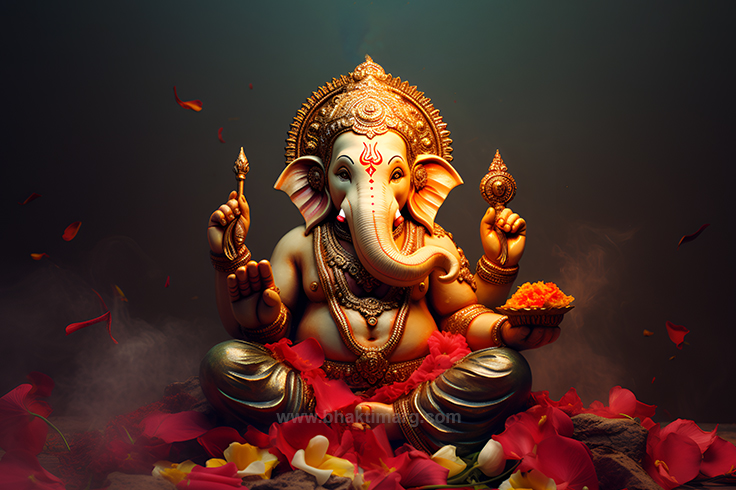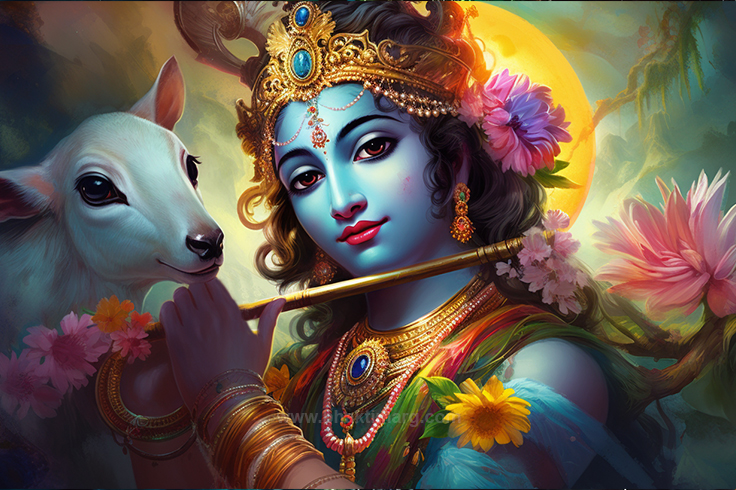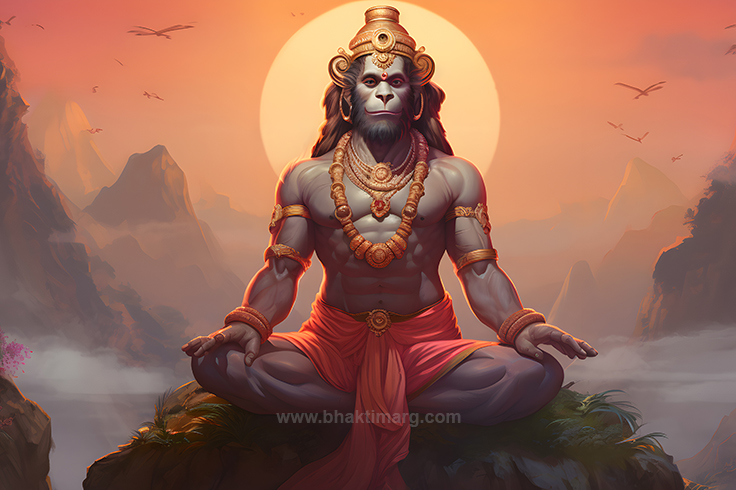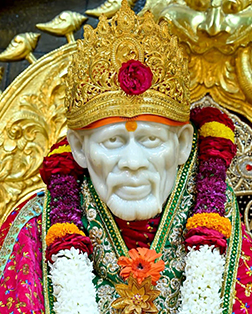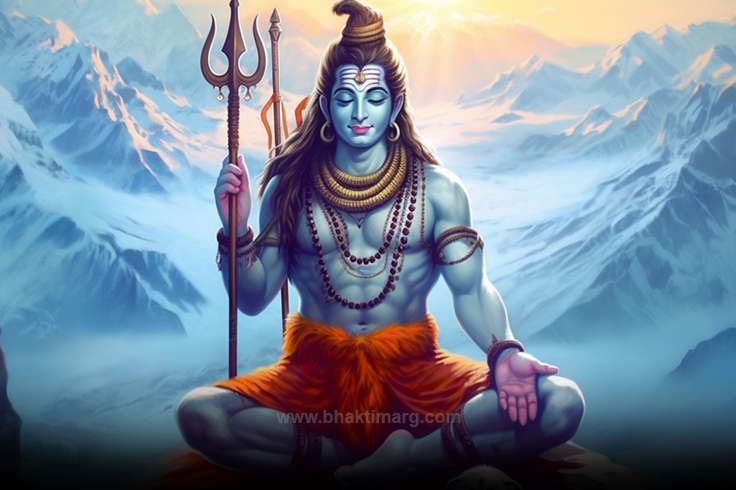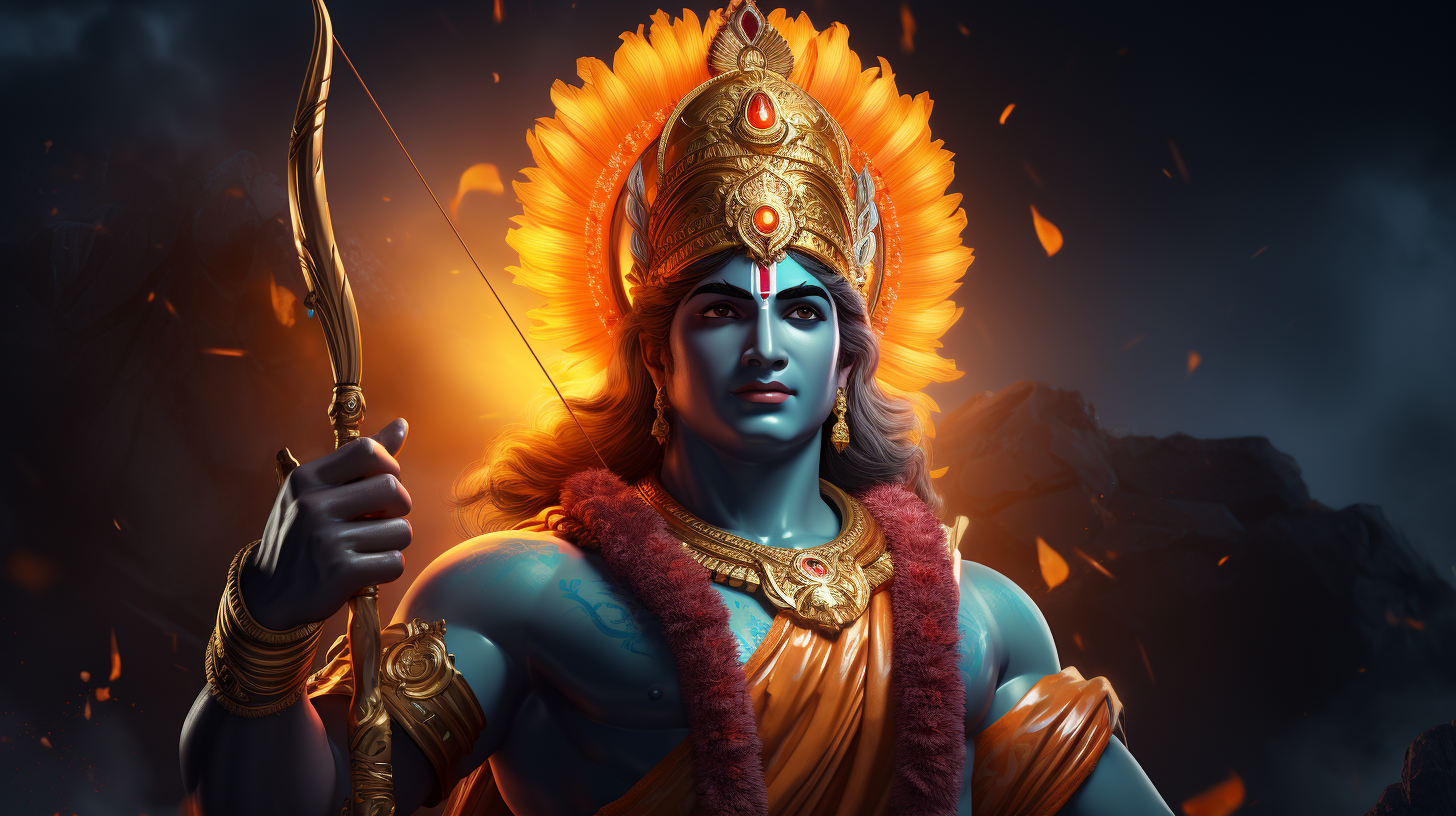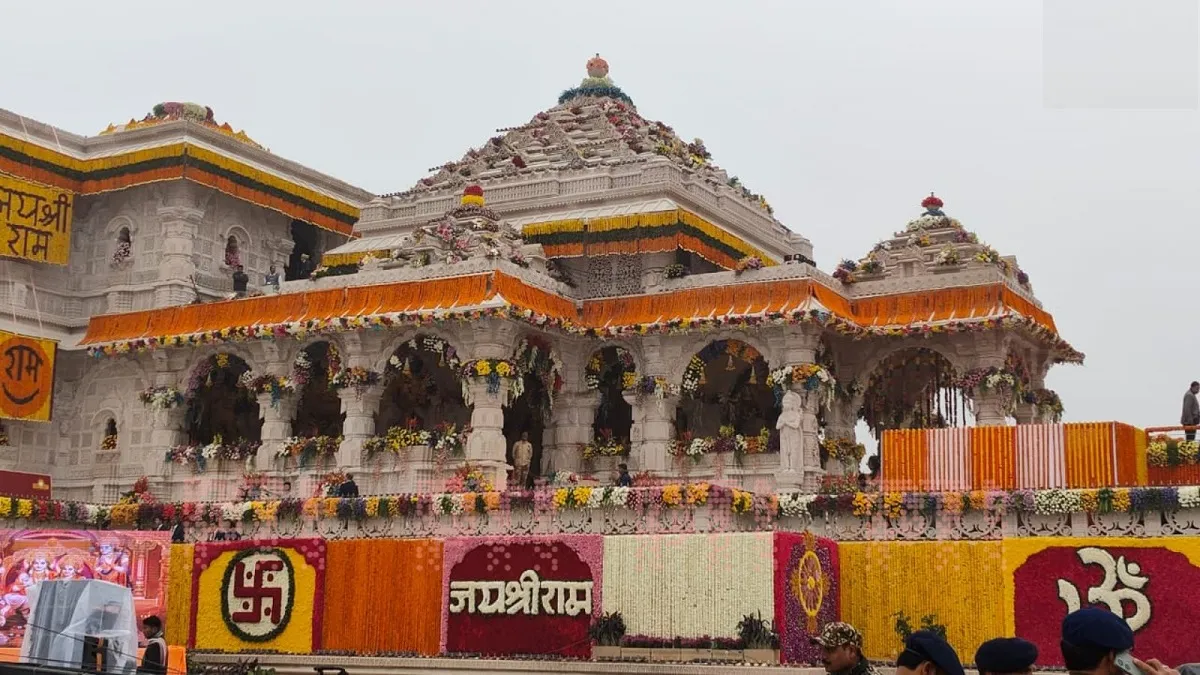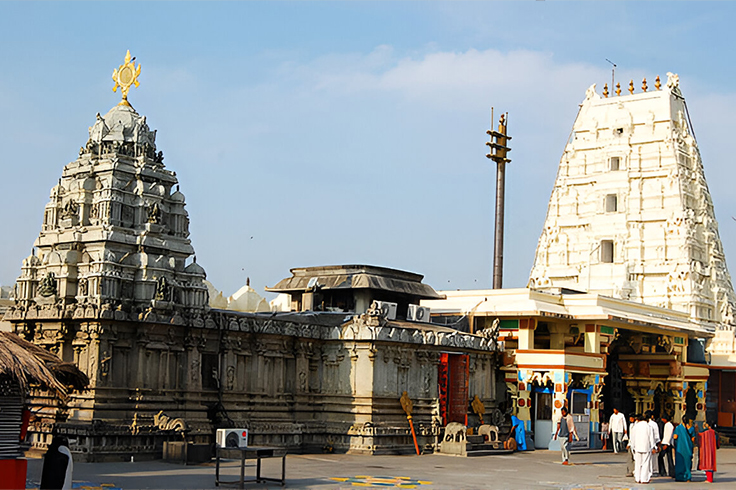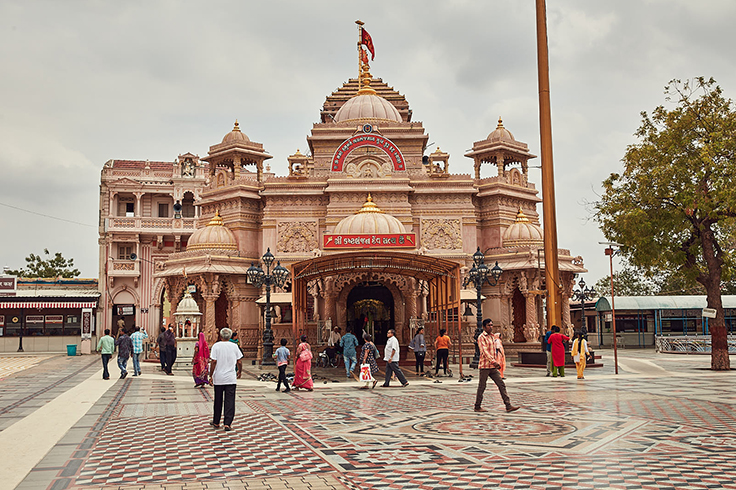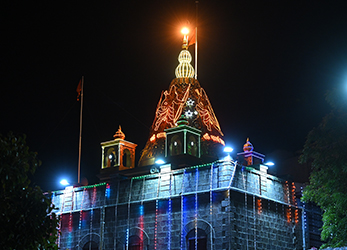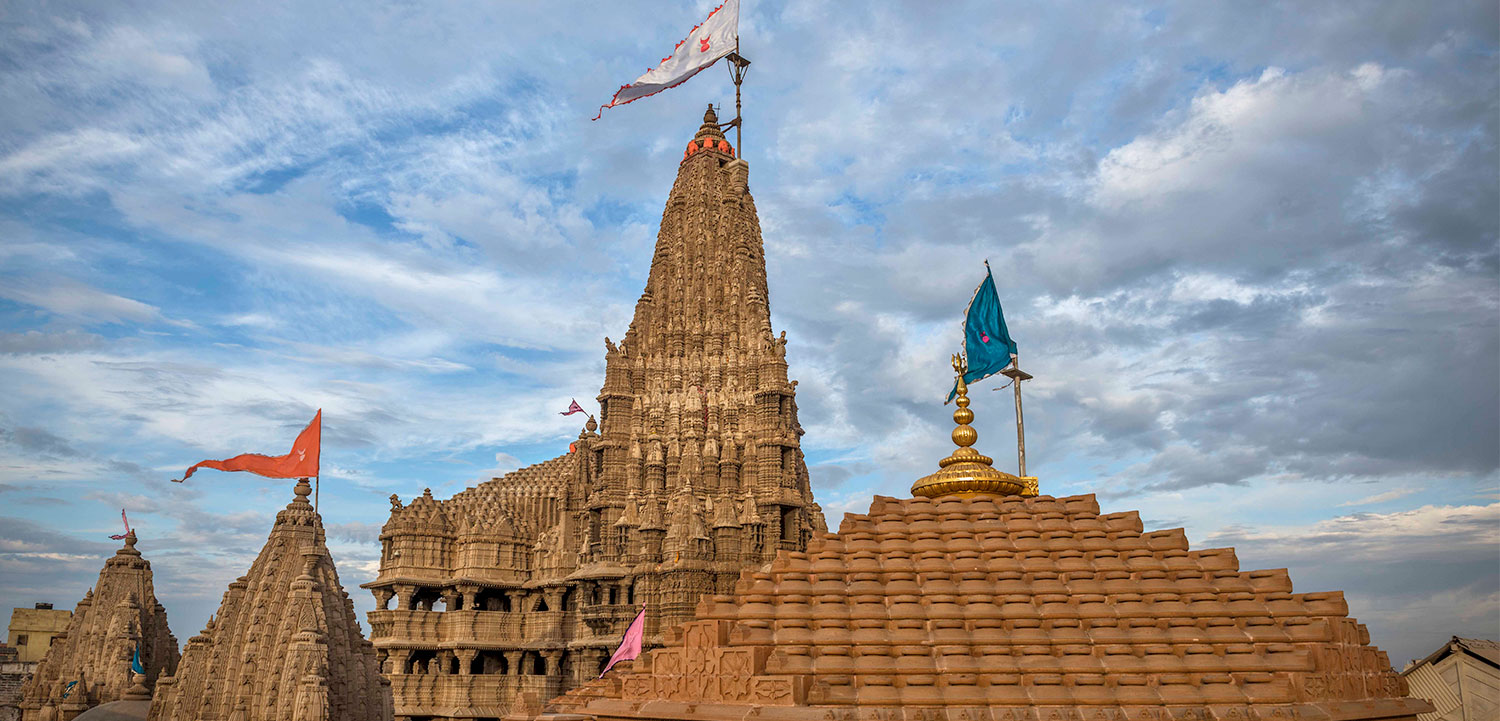Jai Jai Sai Teri Mahima Lyrics in English – Sai Baba Bhajan
Jai Jai Sai Jai Jai Sai
Teri Mahima Ati Sukhdayi
Maat Pita Tum Tum Guru Sai
Tum Karuna Ke Sagar Sai
Maat Pita Tum Tum Guru Sai
Tum Karuna Ke Sagar Sai
Jai Jai Sai Jai Jai Sai
Teri Mahima Ati Sukhdayi
Tumhi Brahma Tumhi Vishnu
Tumhi Sai Ho Shiv Shankar
Tumhi Gajanan Tum Vighneshwar
Tumhi Sai Daata Digambar
Tumhi Samarth Swami Sai
Jai Jai Sai Jai Jai Sai
Teri Mahima Ati Sukh Dayi
Ram Tumhi Ho Shyam Tumhi Ho
Sai Chaaro Dhaam Tumhi Ho
Kaashi Mathura Kaaba Tujh Mein
Sab Hai Sai Baabaa Tujh Mein
Teri Leela Nyaari Sai
Jai Jai Sai Jai Jai Sai
Teri Mahima Ati Sukhdayi
Nis Din Teraa Dhyaan Lagaau
Har Pal Sai Sai Gaau
Jab Tak Tan Me Praan Ho Baaki
Dikh Te Rahe Bas Teri Jhaaki
Itni Dayaa Rakhna Mera Sai
Jai Jai Sai Jai Jai Sai
Teri Mahima Ati Sukhdayi
Dukh Ho Chaahe Sukh Jeevan Mein
Beete Samay Bas Tere Bhajan Mein
Kya Hai Mera Sab Hai Tera
Tan Man Dhan Jeevan Tera
Bigidi Sabhi Ki Tum Ne Banaayi
Jai Jai Sai Jai Jai Sai
Teri Mahima Ati Sukhdayi
Tumse Badaa Na Koi Data
Tum Ho Sab Ke Bhagya Vidhata
Dar Pe Tumhare Jo Bhi Aata
Bin Maange Wo Sab Sukh Paata
Sab Ki Tuune Aas Puraayi
Jai Jai Sai Jai Jai Sai
Teri Mahima Ati Sukhdayi
Sai Baba bhajan and aarti are devotional songs and hymns dedicated to Sai Baba, a revered spiritual head who lived in Shirdi, India, during the late 19th and early 20th centuries. Sai Baba is considered a saint and a spiritual guide by millions of people, and his teachings emphasize the universality of religion, love, and compassion.
Saibaba bhajan can be in several languages and musical styles. They often highlight the virtues, teachings, and miracles associated with Sai Baba. Sai Baba’s devotional songs create an atmosphere of love, devotion, and spiritual connection among the devotees. Some Sai Bhajan focuses on Sai Baba’s role as a compassionate guide and healer, while others celebrate his divine presence and wisdom. Many Sai Baba bhajan emphasize Sai Baba’s boundless compassion, love, and care for all living beings. Sai Baba ka bhajan often portrays the close bond between Shirdi Saibaba and his devotees, highlighting the role of the guru in leading the spiritual journey. A Sai Baba bhakti song inspires devotees to practice detachment from material desires and surrender to the will of Sai Baba. According to Bhakti Marg, reflecting Sai Baba’s teachings, Sai Baba Bhajan songs emphasize the unity of all religions and the universal nature of spirituality.
During a Sai Baba aarti, a lamp or candle is waved in a circular motion while singing a specific hymn. The aarti Sai Baba ki is often performed during specific times of the day, such as sunrise or sunset, and it serves to invoke Sai Baba’s presence and blessings. The Sai Baba aarti, often performed in Shirdi and Sai Baba temples around the world, is the “Kakad Aarti,” “Madhyan Aarti,” ” Sai Baba Dhoop Aarti,” and “Shej Aarti,” each associated with a different time of day. The lyrics of Sai Baba’s full aarti are devotional expressions of gratitude, love, and reverence for Sai Baba.
History and Origin
Sai Baba bhajan and aarti Sai Baba ki are closely tied to the life and teachings of Sai Baba of Shirdi, also known as Shirdi Sai Baba. During his time in Shirdi, Sai Baba often sang devotional songs, including bhajan, to inspire and uplift his devotees. He used Sai Baba Bhajan songs to convey profound spiritual truths in simple and accessible language. Many Saibaba teachings and messages were conveyed through these bhajans, which resonated deeply with his followers. Over time, continued the practice of singing Sai Baba na bhajan, and new Sai Baba bhakti compositions were added to the repertoire. These Sai Bhajan narrated the life, miracles, and teachings of Sai Baba, and they became an integral part of the devotional practices associated with him.
During his lifetime, Sai Baba performed Sai Baba Dhoop aarti to bless and uplift his devotees. He used to light lamps and wave them in front of his devotees, creating a sense of divine presence and love. After Sai Baba’s passing, his devotees continued the practice of aarti in his memory. The Sai aarti ceremony, accompanied by the singing of specific hymns and chanting of Sai Baba’s powerful mantra became an essential part of worship in Sai Baba temples and homes. The Sai Baba evening aarti ritual symbolizes the devotees’ gratitude, devotion, and aspiration for spiritual enlightenment.
Practice
The practice of Sai Baba bhajan and aarti is an essential and cherished aspect of devotion and worship among Sai Baba’s followers. These devotional practices and recitation of Sai Baba lessons create a deep spiritual connection with Sai Baba and provide a means to express love, gratitude, and reverence towards him.
Devotees gather in Sai Baba temples, homes, or spiritual gatherings to sing bhajan and recite Saibaba Satcharitra. The bhajan often recounts his life, miracles, and teachings while expressing the devotees’ devotion and love. Sai Baba Bhajan serves as a means to express various emotions, from joy and celebration to introspection and contemplation. Sai Baba’s devotional songs evoke a sense of connection with Sai Baba’s presence and teachings.
Sai Baba Bhajan is sung in various languages to accommodate the diverse backgrounds of his followers. The melodies of Sai Baba bhakti geet range from traditional to contemporary, allowing devotees to connect with the music in ways that resonate with them. Singing Sai Bhajan together fosters a sense of unity and community among the devotees. The collective chanting of a Sai Baba bhakti song creates a positive and uplifting atmosphere that deepens the spiritual experience.
In the context of Sai Baba, the aarti lamp represents divine presence and blessings. There are several aartis performed throughout the day at Sai Baba temples, each Sai aarti corresponding to different times (e.g., morning, afternoon, evening, and night). During the aarti, a specific hymn is sung, often the “Aarti Sai Baba” or “Kakad Aarti.” These aarti Sai Baba ki are composed in praise of Sai Baba and express the devotees’ devotion and gratitude. The Sai Baba Dhoop aarti ritual serves as a sacred moment of connection between the devotee and Sai Baba.
Both Sai Baba bhajan and Sai Baba full aarti play a vital role in maintaining and nurturing the spiritual relationship between devotees and Sai Baba. These practices offer a way to experience his divine presence, seek guidance, and cultivate a deeper understanding of his teachings. They also provide opportunities for selfless service (seva) and communal participation, fostering a sense of unity and devotion among Sai Baba’s followers.
Significance
The significance of Saibaba bhajan and Sai Nath ki aarti lies in their ability to facilitate a deep spiritual connection, foster devotion, and provide a means of expressing love and reverence toward Sai Baba. These devotional practices hold profound meaning for his followers and play a vital role in their spiritual journey. Sai Baba ke bhajan allows devotees to express their deep devotion and love for Sai Baba. Devotees connect with Sai Baba’s divine presence and teachings through melodious and heartfelt singing. The lyrics of Sai Baba na bhajan often contain Sai Baba’s teachings, miracles, and life stories. Singing bhajan is a way for devotees to learn and internalize his messages, finding inspiration and guidance for their lives. Saibaba bhajan is often sung collectively, creating a sense of unity among devotees. Group singing fosters belonging and shared purpose as everyone comes together to honor Sai Baba. Singing Sai Bhajan can evoke several emotions, including joy, gratitude, and humility. This emotional experience helps devotees connect on a deeper level with their spiritual practice.
Aarti is a ritual of invoking the divine presence of Sai Baba. The waving of the lamp during Sai Baba evening aarti symbolizes dispelling darkness and ignorance, welcoming spiritual illumination into one’s life. During the Sai Baba ki Dhoop Aarti, devotees offer themselves to Sai Baba. The ritual of waving the lamp represents surrendering one’s ego and seeking blessings for spiritual growth and well-being. Participating in the Sai Aarti encourages devotees to be present at the moment and focus their attention on the divine. The light of the aarti lamp is believed to have purifying and healing properties. It is thought to cleanse the environment and the devotee’s aura, promoting inner peace and harmony.
Both Sai ke bhajan and aarti offer a means for devotees to cultivate a strong spiritual bond with Sai Baba, deepen their understanding of his teachings, and find solace, guidance, and inspiration in their spiritual journey. These devotional practices bridge the gap between the material and the divine, fostering a profound connection that brings devotees closer to their beloved saint and guru.
Benefits
Participating in Sai Baba ka Bhajan and aarti can offer a range of spiritual, emotional, and psychological benefits. Reciting or listening to Sri Sai Satcharitra and participating in other devotional practices are a way to express love and reverence for Shri Sai Baba and also serve as powerful tools for personal growth and well-being. Bhajan and aarti create a sacred atmosphere and help devotees connect with Sai Baba’s divine presence, fostering a deeper spiritual connection. Singing Sai Baba na bhajan and participating in Sai Baba ki aarti evoke positive emotions such as joy, gratitude, and inner peace. Engaging in devotional practices like Sainath Dhoop aarti can help reduce stress and anxiety by promoting relaxation and mindfulness.
Sai Baba ke bhajan often highlights virtues such as love, compassion, humility, and selflessness, encouraging devotees to embody these qualities in their lives. Bhajan often contains stories and teachings from Sai Baba’s life, allowing devotees to learn about his wisdom and experiences. Singing bhajan, chanting the powerful Sai Baba mantra, and attending Sai Nath ki aarti provide opportunities for social interaction and community bonding among like-minded devotees.
Regular engagement in Sai ke bhajan and aarti can lead to personal growth and transformation as devotees seek to align their lives with Sai Baba’s teachings. The practice of selfless service (seva) often accompanies these devotional practices, fostering humility and a sense of purpose. Participating in Sai Aarti encourages devotees to be present at the moment and focus their attention on the divine. Bhajans, aartis, and Saibaba mantra are an integral part of the Sai Baba tradition, allowing devotees to connect with the cultural and spiritual heritage associated with him. Engaging in these practices honors the legacy of Sai Baba and keeps the Sai Baba real story and his teachings alive.
The practice of Sai Baba ka bhajan and Sai Baba ki aarti offers a holistic approach to spirituality, addressing the physical, emotional, mental, and social aspects of a devotee’s well-being. By chanting Sai Baba Maha Mantra, devotees can experience a profound sense of connection, growth, and inner fulfillment on their spiritual journey.



